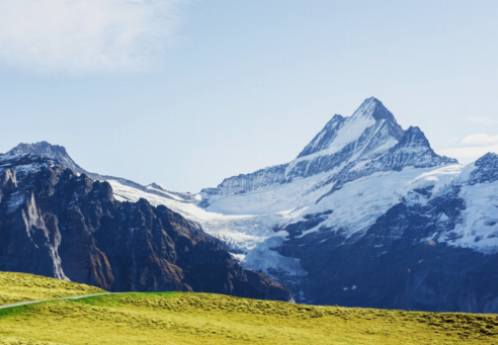Switzerland, known for its picturesque landscapes and rich cultural heritage, has long been a hub for sustainable practices that are in harmony with nature. From the traditional Swiss chalets nestled in the Alps to the preservation of heritage cattle breeds, the conservation efforts in Switzerland showcase a deep commitment to maintaining the natural beauty and biodiversity of the region. Join us as we explore the traditional practices and conservation initiatives that have helped Switzerland preserve its unique ecosystem for generations to come.

Traditional Swiss Chalets: Sustainable Architecture in the Alps
The traditional Swiss chalet is an iconic symbol of the alpine region, known for its sustainable architecture that has stood the test of time. These charming wooden houses are built using locally sourced materials such as wood and stone, blending seamlessly with the natural landscape. The steeply pitched roofs are designed to withstand heavy snowfall, while the wide eaves provide shade in the summer months. The simple yet functional design of the chalet reflects the resourcefulness and ingenuity of the Swiss people, who have lived in harmony with their environment for centuries. Today, these traditional chalets continue to be beloved homes and vacation rentals, showcasing the beauty and sustainability of alpine architecture.
Heritage Cattle Breeds in the Swiss Alps: Preserving Biodiversity
Heritage cattle breeds in the Swiss Alps play a crucial role in preserving biodiversity in the region. These traditional breeds have adapted to the harsh mountain environment over centuries, making them well-suited to the alpine terrain. By raising and maintaining these heritage cattle breeds, local farmers are not only preserving a part of their cultural heritage but also helping to maintain a diverse ecosystem.
These cattle breeds play a significant role in maintaining the balance of the local ecosystem. Grazing on the mountain pastures, they help control vegetation growth and prevent the spread of invasive plant species. Their manure also contributes to fertilizing the soil, promoting healthy pasture growth and supporting the diverse flora and fauna found in the Alps.
Furthermore, these heritage cattle breeds have unique genetic traits that make them valuable for breeding programs. By preserving and breeding these traditional cattle breeds, farmers are ensuring genetic diversity within the population. This diversity is essential for the long-term health and resilience of the breed, especially in the face of changing environmental conditions and new challenges.
In conclusion, heritage cattle breeds in the Swiss Alps play a crucial role in preserving biodiversity and maintaining a sustainable ecosystem. By continuing to raise and protect these traditional breeds, local farmers are not only preserving a part of their cultural heritage but also contributing to the overall health and diversity of the alpine environment.
Edelweiss Conservation: Protecting an Iconic Alpine Flower
However, due to factors such as habitat loss, climate change, and overharvesting, the Edelweiss is now facing threats to its survival.
Conservation efforts are crucial to ensure the continued existence of this iconic alpine flower. Organizations and researchers are working to protect the Edelweiss by implementing measures such as habitat restoration, monitoring populations, and raising awareness about the importance of conserving this species.
By taking action to preserve the Edelweiss, we are not only protecting a symbol of the Swiss Alps, but also safeguarding the biodiversity of the region. The Edelweiss plays a vital role in the ecosystem, providing food and habitat for various species of insects and wildlife.
Through collaborative conservation efforts, we can work towards ensuring that future generations will be able to enjoy the beauty of the Edelweiss and experience the rich biodiversity of the Swiss Alps. It is essential that we value and protect this iconic flower to maintain the delicate balance of nature in this unique and precious environment.
Alpine Cheesemaking: Traditional Methods for Sustainable Production
Alpine cheesemaking has a rich tradition in the Swiss Alps, with generations of cheesemakers passing down their knowledge and techniques to preserve this important aspect of their culture. The process of making Alpine cheese involves using fresh milk from local cows that graze on alpine grasses and herbs, giving the cheese its unique flavor. Cheesemakers use traditional methods such as hand stirring the curds, pressing them into molds, and aging the cheese in natural caves to develop its complex flavors.
These traditional methods not only result in a delicious and high-quality product, but they also contribute to sustainable production practices. By using local milk from heritage cattle breeds and natural ingredients, Alpine cheesemakers help support local biodiversity and preserve traditional farming practices. Additionally, aging the cheese in natural caves helps reduce energy consumption and minimize the environmental impact of the production process.
The popularity of Alpine cheese has grown in recent years, with many consumers seeking out artisanal and locally made products. This increased demand has led to a resurgence in traditional cheesemaking practices, further supporting sustainable production in the Swiss Alps. By preserving these centuries-old techniques, Alpine cheesemakers are not only creating delicious cheese but also helping to protect the environment and promote cultural heritage for future generations to enjoy.
